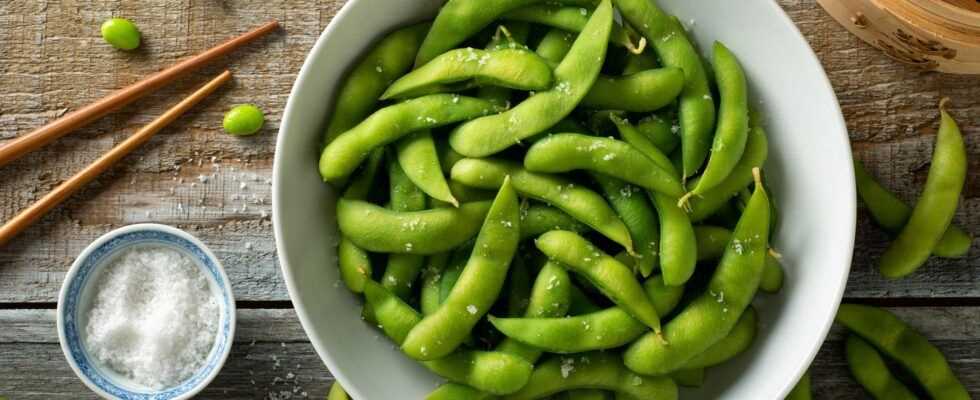Edamame – the Japanese super beans
Edamame is about green, unripe soybeansthat are from Japan. The translation "stalk beans" comes from the fact that the pods are usually cooked with the stem. However, the pods are not edible, only the beans inside.
In Japan, edamame are often served in pubs as a salty side dish to beer, similar to what we know with peanuts. The difference: Edamame are only cooked and are therefore healthier and lower in calories than many other snacks. The crispy beans have a nutty to slightly sweet taste.
Prepare edamame: that's how it works
The ingredients:
- 1 liter of water
- 2 teaspoons of salt
- 400 g edamame
Preparation of edamame:
Heat the water in a saucepan on the stove and season with salt. As soon as it starts to boil, the edamame for example for five to ten minutes cook in it. Then you can scoop it out of the water with a skimmer. Normally a salt crust has already formed on the skin, but you can also add sea salt or other spices such as paprika, chilli or garlic to the edamameSpice up.
Also in combination with Lime juice, sesame oil or soy sauce the small beans taste great. Edamame are eaten by sucking them out of the sleeve with your mouth or by pushing them out with your fingers.
This is why edamams are so healthy
Edamame have many advantages over traditional snacks. With about 125 kilocalories per 100 grams For example, they are very low in calories (for comparison: 100 grams of potato chips contain more than 500 calories). The soybeans are also rich in protein and have a low fat content (5 grams of fat per 100 grams).
Edamame also scores with lots of fiber and vitamins A, C and E. The beans are included 11 grams of protein per 100 grams a popular source of protein among vegans and look great in Buddha bowls, for example.
Commodity Edamame: Season, Purchase and Storage
Have edamame from June to September season, but are mostly available frozen in Asian shops all year round. When shopping, you should make sure whether the soybeans are unsalted or already salted and adjust the preparation accordingly.
Due to the long transport route, the beans have a poor ecological balance, but there are now edamams that also exist are grown in Europe. Therefore, when buying, you should pay attention to the origin and ideally use organic beans.
Frozen edamame should of course be stored in the freezer, fresh edamame is best stored in the refrigerator. There they stay about three to four days.
Video tip: Cooking beans
